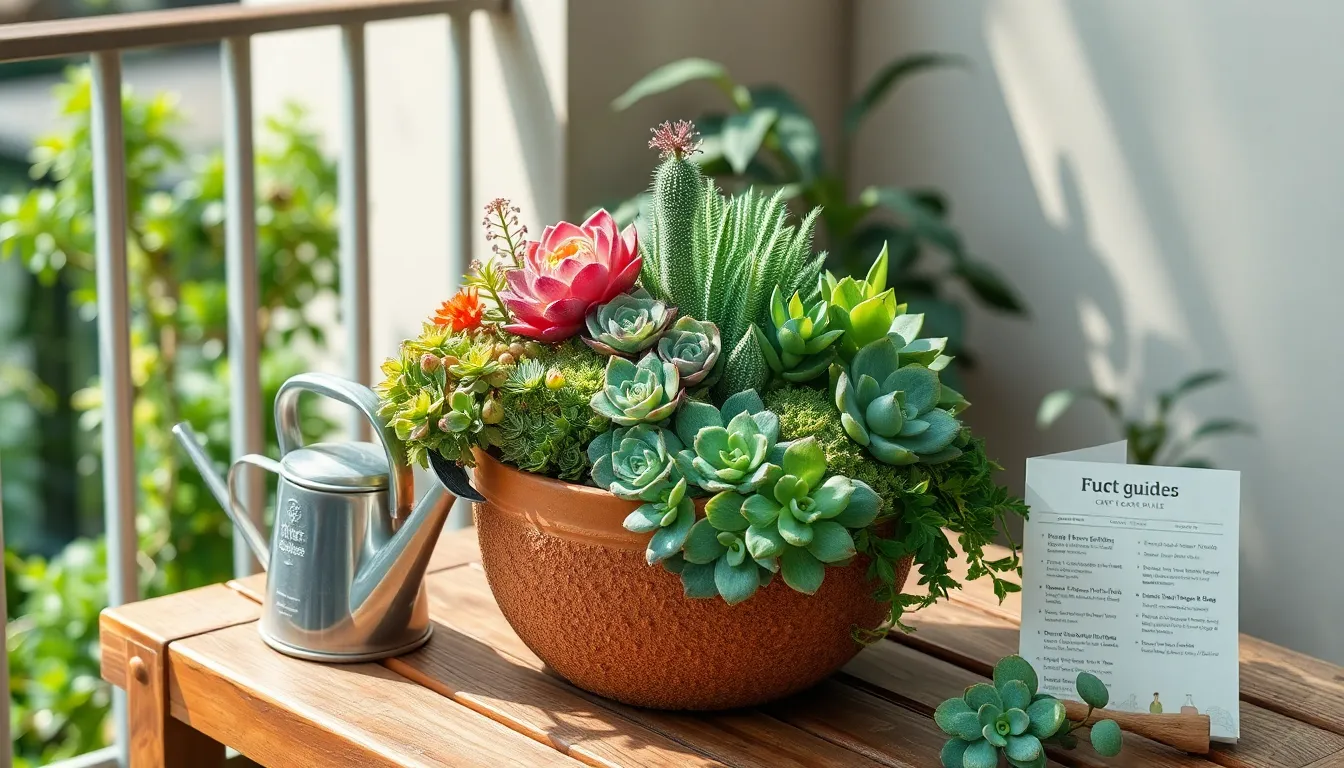In today’s fast-paced world, finding the time to nurture a garden might seem like a luxury only for those with ample free hours. Yet, the joy and tranquility that come from cultivating a green space are well within reach, even for the busiest among us. Whether you’re a seasoned gardener looking to simplify your routine or a beginner eager to bring a touch of nature into your life, this guide is your gateway to creating a verdant haven without the hassle.
Plant care doesn’t have to be an overwhelming task; in fact, it can be a delightful escape from the daily grind. By selecting easy-to-care plants, you can enjoy the benefits of gardening with minimal effort and maximum satisfaction. In this article, we’ll explore a selection of resilient plants that thrive with just a bit of attention, allowing you to enjoy their beauty and benefits without adding stress to your schedule.
You’ll discover which plants are best suited to your lifestyle, offering a low-maintenance solution to greenery that brightens your space and lifts your spirits. We’ll delve into practical tips and techniques that ensure your plants flourish, even if your time is limited. Embrace the joy of gardening that fits seamlessly into your life, and let’s embark on this journey to a more beautiful, natural environment together.
Choosing Low-Maintenance Houseplants
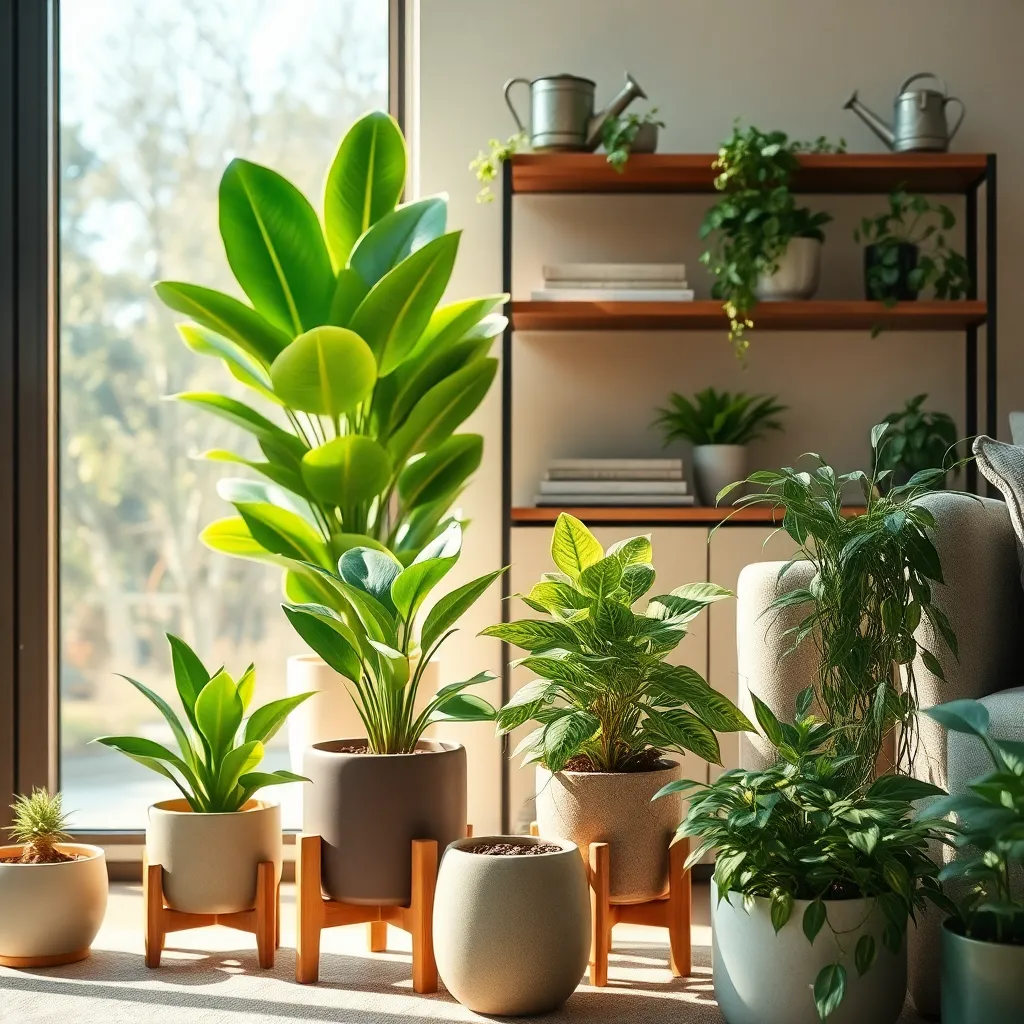
When choosing low-maintenance houseplants, consider species that thrive on minimal care. Snake plants and ZZ plants are excellent options, as they tolerate low light and infrequent watering.
It’s important to select plants that suit your home environment. For instance, if your space lacks natural light, opting for plants like the pothos or peace lily can ensure success as they adapt well to low-light conditions.
For those new to gardening, start with a simple care routine. Watering once every two weeks is typically sufficient for most low-maintenance plants, making them ideal for people with busy schedules.
Advanced gardeners can enhance their plant’s health by occasionally wiping leaves to remove dust. This not only improves the plant’s appearance but also boosts its ability to photosynthesize effectively.
To ensure your low-maintenance houseplants thrive, use the right soil. A well-draining potting mix with added perlite or sand is recommended to prevent root rot from overwatering.
Consider repotting your plants every couple of years to refresh their growing medium and give roots more space. This practice can lead to healthier, more vibrant plants that continue to grow steadily even with minimal intervention.
Best Succulents for Time-Strapped Gardeners
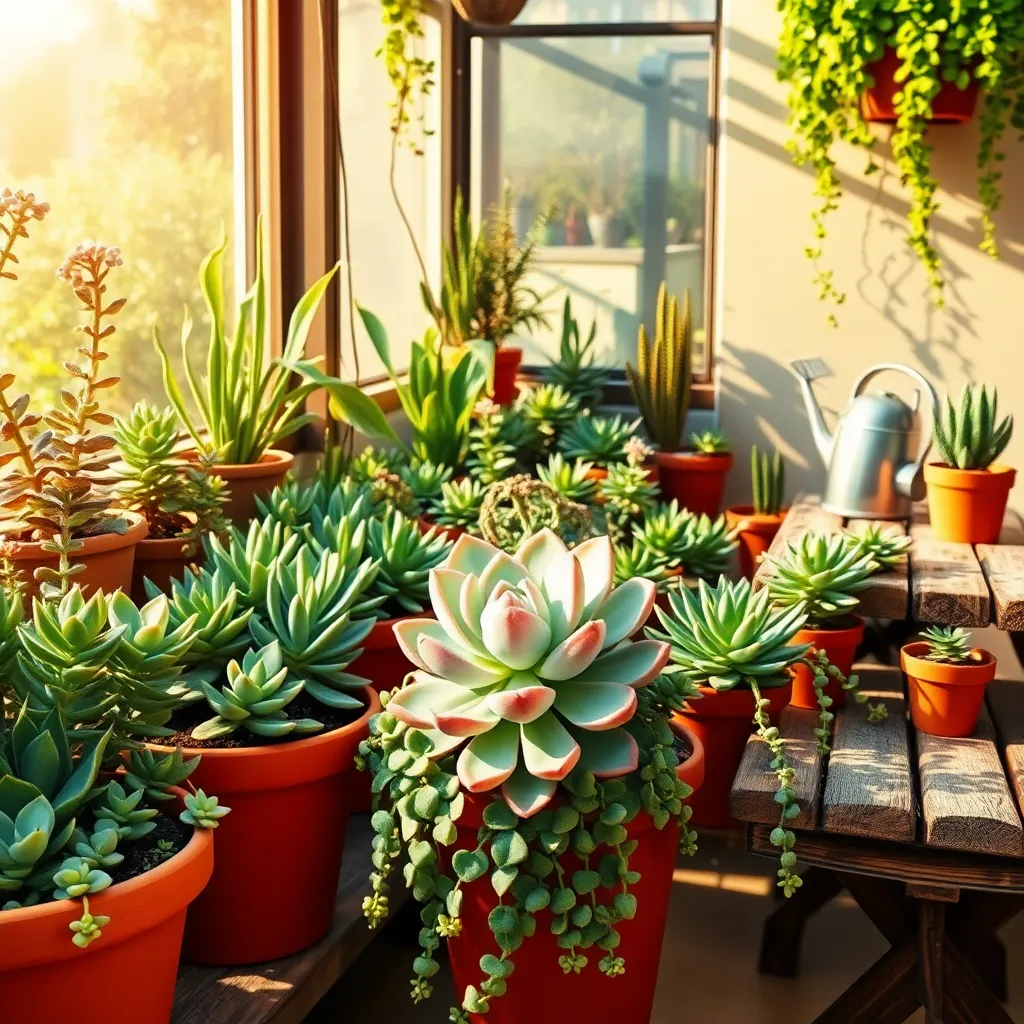
Succulents are superb choices for time-strapped gardeners because they require minimal care and still thrive. Their ability to store water in their leaves makes them highly drought-resistant, which means less frequent watering is needed.
A great option for beginners is the jade plant, known for its durability and appealing appearance. Place your jade plant in a spot with bright, indirect sunlight, and water it only when the soil is completely dry.
Another excellent choice is the snake plant, which can tolerate low light and infrequent watering. Ensure it is planted in well-draining soil, such as a cactus mix, to prevent root rot.
For those with slightly more experience, the Echeveria offers a beautiful rosette shape and vibrant colors. It thrives in full sun and requires watering only every couple of weeks, making it a low-maintenance beauty for any collection.
Hardy Outdoor Plants for Busy Lives
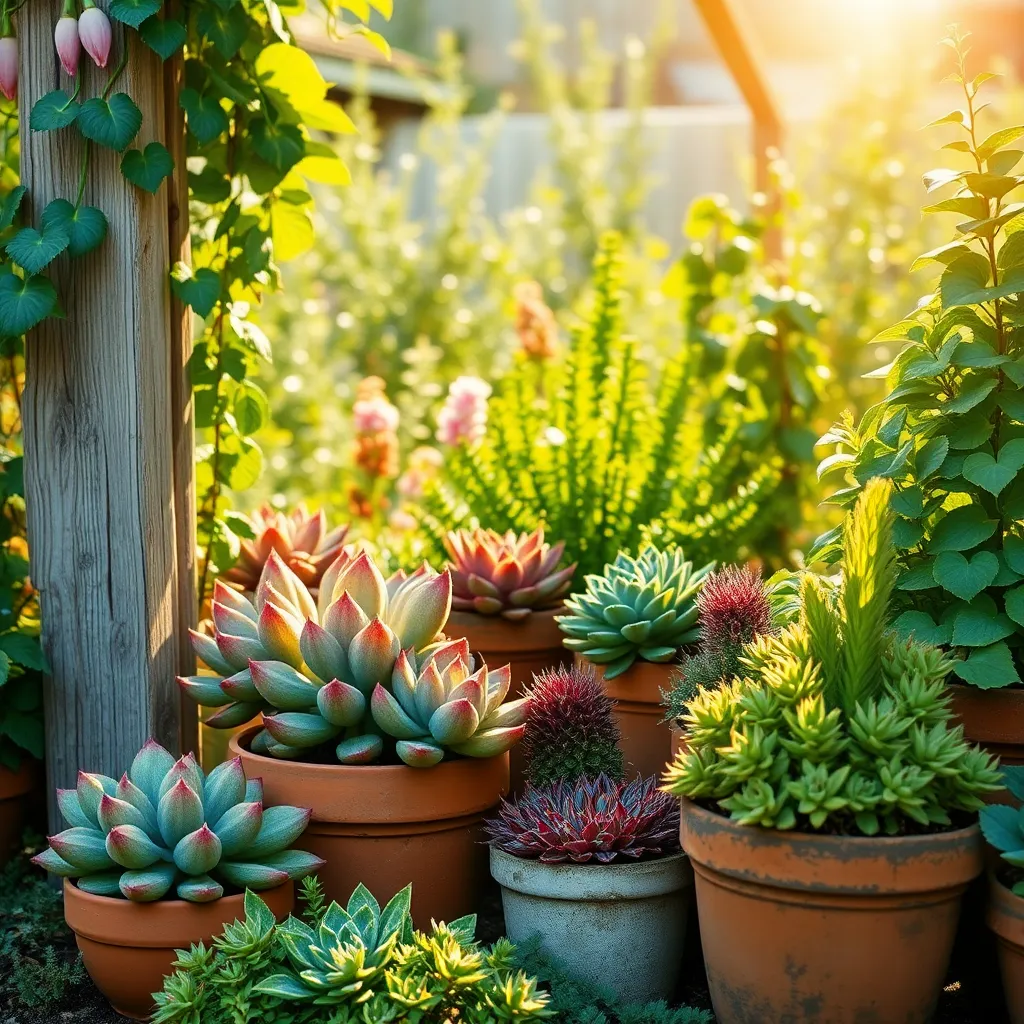
For gardeners who crave lush outdoor spaces without the commitment of high maintenance, hardy plants are the perfect solution. These plants are resilient, thriving in a variety of conditions with minimal care, making them ideal for those with busy schedules.
Consider planting lavender, which not only adds a pop of color but also requires very little attention. This fragrant herb prefers well-drained soil and full sun exposure, and it can tolerate drought once established, making it a superb choice for low-maintenance gardens.
Another excellent option is the daylily, known for its vibrant blooms and ability to thrive in both sun and partial shade. Daylilies are incredibly tough, needing only occasional watering and a sprinkle of mulch to retain moisture and suppress weeds.
For those looking to add some greenery, boxwood shrubs are a classic choice that can withstand a range of conditions. They require just a bit of pruning to maintain shape and can thrive in various soil types, making them a versatile addition to any garden.
To succeed with these plants, consistency is key, so establish a simple routine to ensure they receive the essentials. Mulching can be a game-changer, as it helps conserve moisture and reduce weeds, allowing you to spend less time fussing over your garden.
Simple Watering Tips for Easy Care
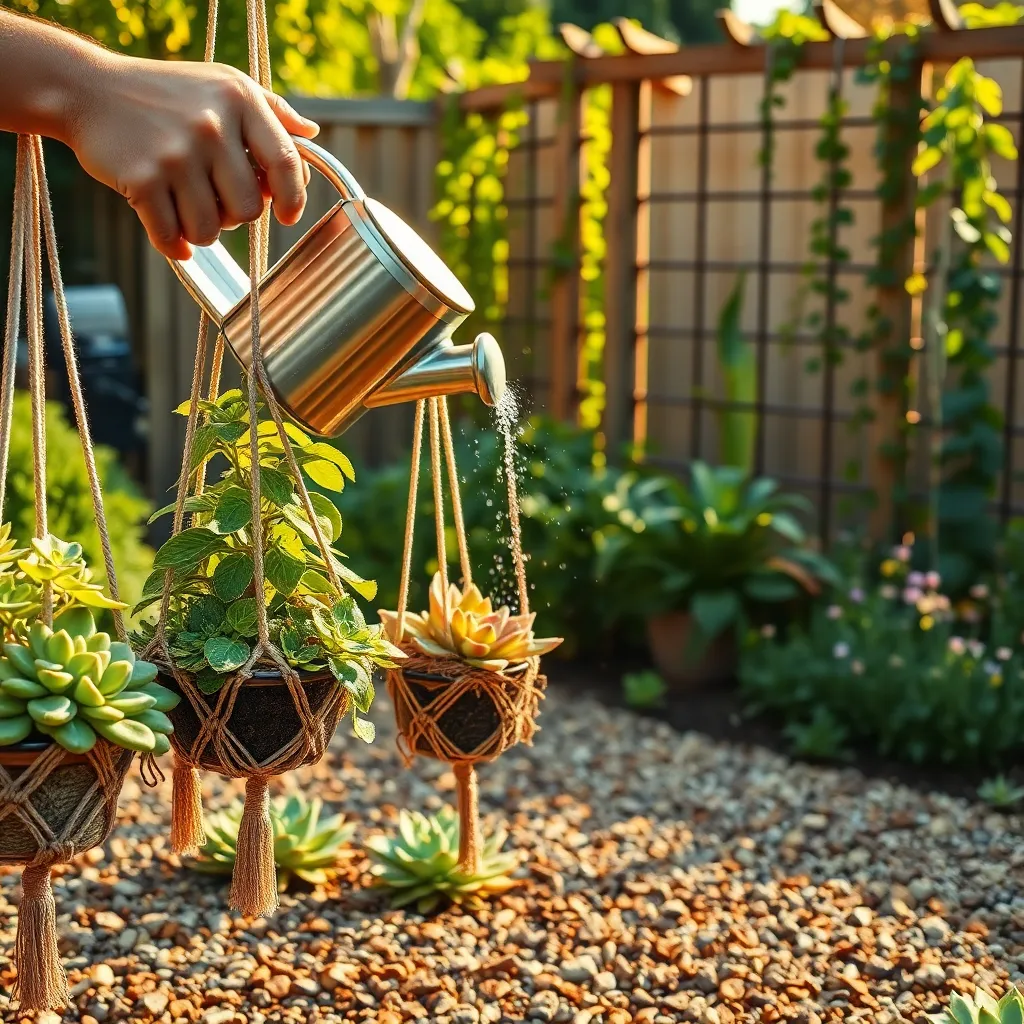
Watering your plants correctly can make a significant difference in their health and growth. To start, make sure to water your plants early in the morning or late in the afternoon to minimize evaporation, ensuring they get the most benefit from each watering session.
Understanding the specific needs of your plants is crucial for effective watering. Research the water requirements of each plant species, as some may prefer drier conditions while others thrive in more consistently moist soil.
Using the right soil type can also aid in effective watering. Well-draining soil is essential for most plants, as it prevents water from pooling and causing root rot, which is a common issue with overwatering.
For those with busy schedules, consider using a self-watering pot or drip irrigation system. These systems can be set up to automatically water your plants at regular intervals, ensuring they receive consistent moisture without requiring daily attention.
Quick Fertilizing Hacks for Healthier Plants
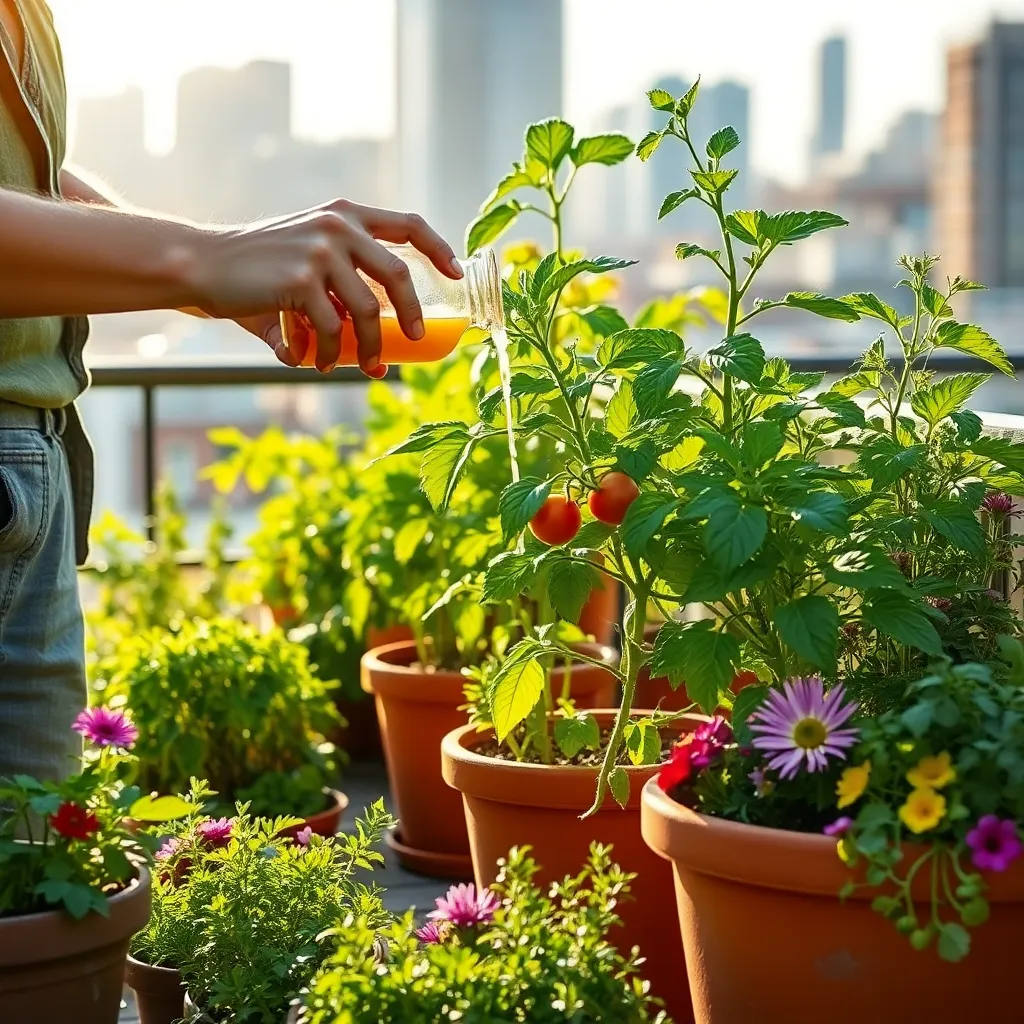
Fertilizing your plants can be both quick and easy if you know the right tricks. One simple hack is using diluted liquid fertilizer every few weeks to give plants a consistent nutrient boost without overwhelming them.
For busy gardeners, slow-release granular fertilizers are a lifesaver. They break down over time, ensuring your plants get nutrients gradually, which means you don’t have to remember to fertilize as often.
Coffee grounds can be an excellent, natural fertilizer for acid-loving plants like azaleas and blueberries. Simply sprinkle the grounds around the base of the plants to enhance soil acidity and add essential nutrients.
To kickstart plant growth, try making a compost tea by steeping compost in water for a natural nutrient-rich solution. This can be sprayed onto leaves or poured into the soil to quickly improve plant health without synthetic chemicals.
Conclusion: Growing Success with These Plants
As we wrap up our exploration of ‘Easy-to-Care Plants for Busy People’, remember these five key relationship concepts: nurturing small but meaningful connections, understanding the importance of regular attention, embracing growth and change, creating a supportive environment, and cultivating patience and resilience. These principles, much like caring for a plant, are essential in cultivating thriving relationships amidst a busy lifestyle.
Your actionable next step is simple: choose one relationship in your life that requires a little more nurturing, and apply one of these concepts today. Whether it’s sending a thoughtful text, scheduling a coffee catch-up, or simply listening more intently, small actions can yield significant growth.
Bookmark this article as your go-to guide for relationship care, ensuring you have a handy reminder of these foundational concepts. Just as these plants bring life to your home with minimal effort, these principles will breathe vitality into your interactions.
Looking forward, remember that relationship success is not about grand gestures, but consistent, loving care. With these tools at your disposal, you’re empowered to cultivate lasting, enriching relationships. Save this article now, and watch your connections flourish.

